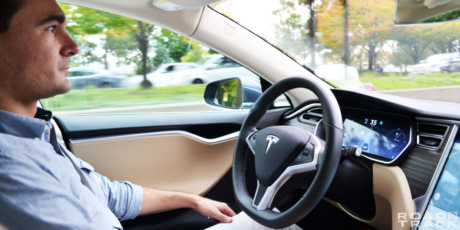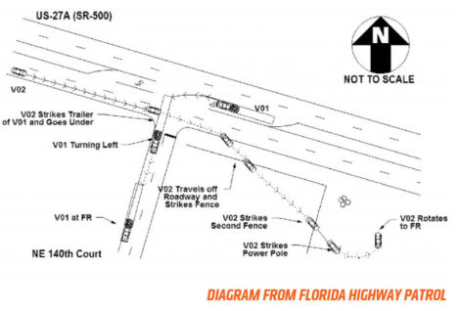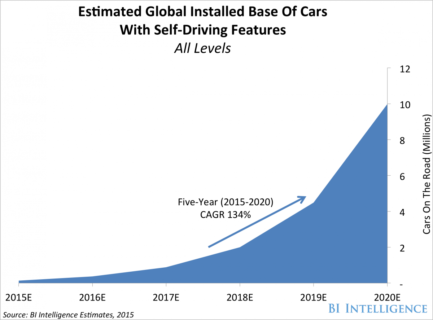 After the May 7th fatal accident using the autopilot feature in the Tesla Model S sedan that killed Joshua Brown, the US Government has officially announced the first fatality in a wreck involving a car in self-driving mode. Federal regulators are also investigating the design and performance of the system aboard the Tesla Model S.
After the May 7th fatal accident using the autopilot feature in the Tesla Model S sedan that killed Joshua Brown, the US Government has officially announced the first fatality in a wreck involving a car in self-driving mode. Federal regulators are also investigating the design and performance of the system aboard the Tesla Model S.
So what does this mean for the future of self-driving cars? Brown himself posted a video touting the amazing capabilities of his “Tessy.” Tesla posted that its autopilot system did not recognize the white side of the tractor trailer (which turned left in front of Brown spurning the devastating chain of events) against a brightly lit sky, so its brake was never activated. Tesla also mentioned that Brown’s fatality is the first in over 130 million miles since autopilot has been activated in 2015. Now that the government is involved what can we expect in terms of progress—or delay—in self-navigation. Here’s a look at what some predict:
The federal traffic safety agency is nearing the release of a new set of guidelines and regulations regarding the testing of self-driving vehicles on public roads. They are expected to be released in July.
At a recent technology conference in Novi, Mich., the agency’s leader, Mark Rosekind, said self-driving cars should at least be twice as safe as human drivers to result in a significant reduction in roadway deaths. “We need to start with two times better,’’ Mr. Rosekind said. “We need to set a higher bar if we expect safety to actually be a benefit here.”
Karl Brauer, an analyst with the auto research firm Kelley Blue Book, said the accident served as a signal that the technology might not be as advanced and ready for the market as some proponents have suggested.
“This is a bit of a wake-up call,” Mr. Brauer said. “People who were maybe too aggressive in taking the position that we’re almost there, this technology is going to be in the market very soon, maybe need to reassess that.”
According to the Levy Journal police blotter, Brown’s Model S traveled beneath an 18-wheeler’s trailer that was making a left turn from a highway intersection with no stoplight. We don’t yet know what happened in either vehicle during the fatal crash—that’s what the National Highway Traffic Safety Administration (NHTSA) investigation wants to find out. But you can see why allowing a human to take back control of a car that has already started making a decision to avoid a crash might create a crash instead. And even if there was some kind of sensor blind spot, or a flaw in the software, or just a flat-out failure of the system, requiring the driver’s hands to remain on the steering wheel is problematic. For the system to be foolproof, it should not need—or allow—human intervention as a backup. That’s why transit leaders from 46 cities believe fully autonomous cars are the safest solution.

Which highlights another important point: We need data to prove this. Companies that are collecting this kind of crash information need to hand it over to the Department of Transportation. Just a few weeks after the crash happened, but before the investigation was made public, Tesla announced that it was doing just that. Whether the impetus for the announcement was the crash or not, it doesn’t matter much now. But this should absolutely be a requirement for everyone from Google to Uber to start saving more lives on our streets.
Last week a big study explored the ethical dilemmas of how the AI in self-driving cars make decisions, something that Google has talked about at length. But an important point was missed in that study: truly autonomous vehicles don’t exist in a vacuum. If the tractor-trailer had also been fully autonomous—heck, if both cars simply had the very basic connected vehicle tech that the NHTSA is making standard on all cars—the truck would have communicated with the Tesla long before any potential crash. This is the best evidence yet that we need to get our hands off the steering wheels as soon as possible—or get rid of the steering wheels completely.
 And a report by Business Insider which claims that 10 million self-driving cars will be on the road by 2020—published 2 weeks before the US announced its probe into autonomous driving:
And a report by Business Insider which claims that 10 million self-driving cars will be on the road by 2020—published 2 weeks before the US announced its probe into autonomous driving:
In an in-depth report from BI Intelligence, we analyze the self-driving car market by analyzing the current state of the self-driving car and provide an in-depth analysis for how we see the self-driving car progressing over the next five years. Our in-depth analysis describes the economic impact that self-driving cars can have and look at the current barriers preventing the self-driving car from coming to market.
Here are some of the key takeaways from the report:
- Self-driving cars are not some futuristic auto technology; in fact there are already cars with self-driving features on the road. We define the self-driving car as any car with features that allow it to accelerate, brake, and steer a car’s course with limited or no driver interaction.
- We divide the self-driving car into two different types: semi-autonomous and fully autonomous. A fully autonomous vehicle can drive from point A to point B and encounter the entire range of on-road scenarios without needing any interaction from the driver. These will debut in 2019.
- By the end of the forecast period, we expect there will be nearly 10 million cars with one of our defined self-driving car features.
- Fully autonomous cars are further divided into user-operated and driverless vehicles. Because of regulatory and insurance questions, user-operated fully autonomous cars will come to market within the next five years, while driverless cars will remain a long ways off.
- The biggest benefits of self-driving cars are that they will help to make roads safer and people’s lives easier. In the UK, KPMG estimates that self-driving cars will lead to 2,500 fewer deaths between 2014 and 2030.
- But the barriers to self-driving cars remain significant. Costs need to come down and regulations need to be clarified around certain self-driving car features before the vehicles fully take off among mainstream consumers.
In full, the report:
- Explains our definition of a self-driving car and breaks down the self-driving car into five levels of possible capabilities
- Sizes the current and expected self-driving car market, including shipment forecasts and expected installed base
- Analyzes how both car and tech companies are approaching the self-driving car
- Determines the benefits of the self-driving car
- Assesses the costs and regulations preventing the self-driving car from coming to market
What do you think of the future of self-driving cars? Would you use an AI driver? Tweet us @dotcomplicated and let us know your thoughts!










